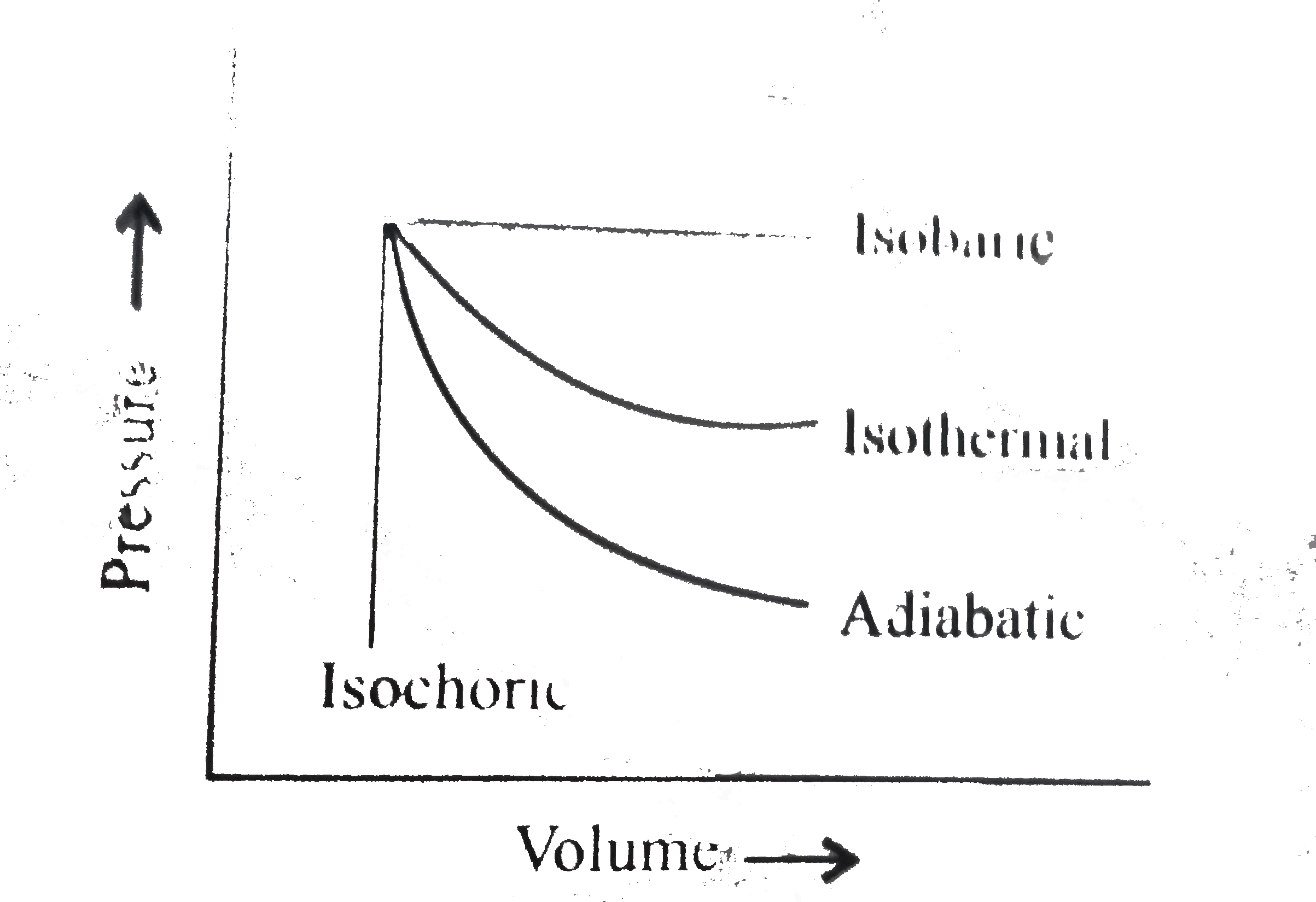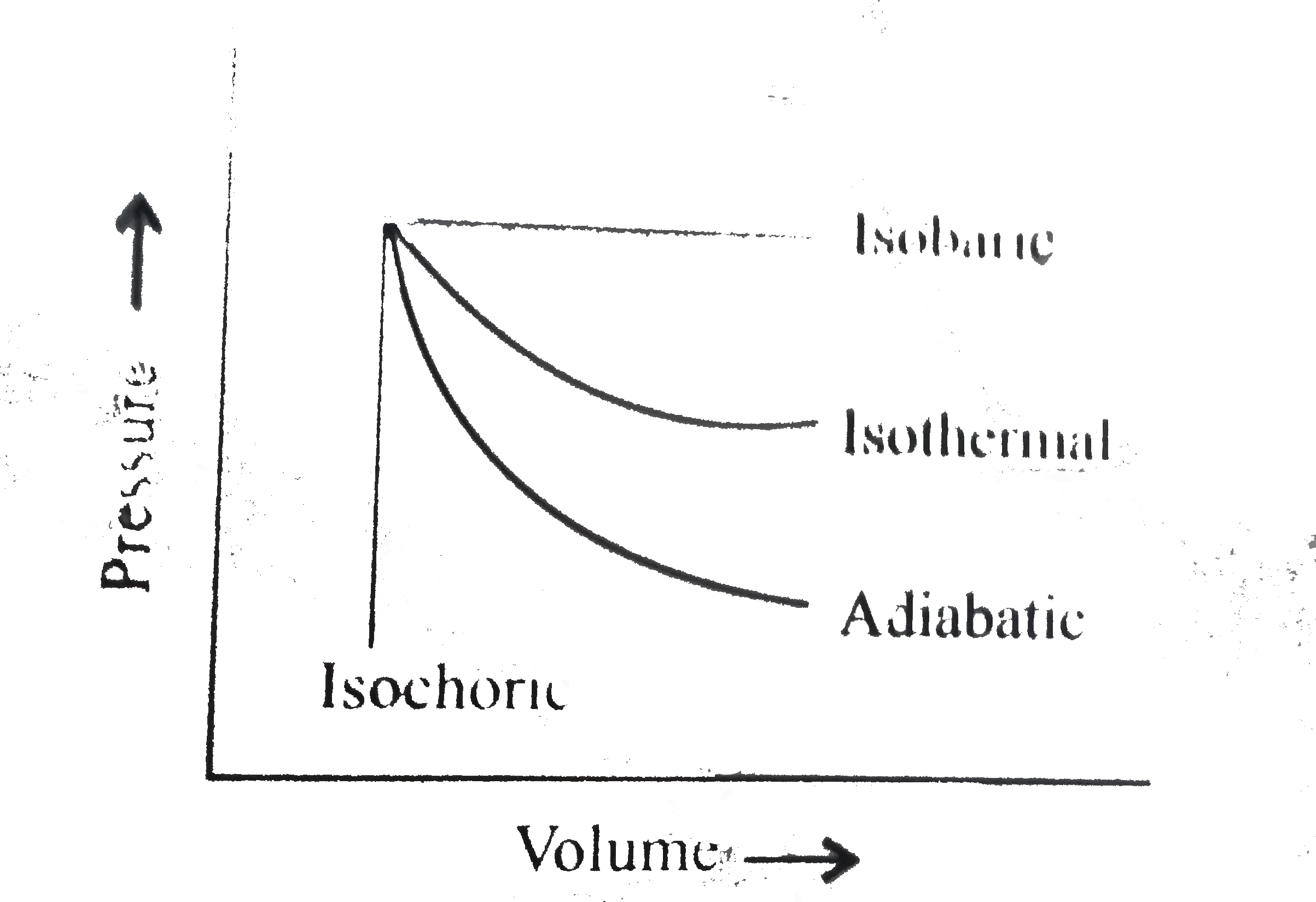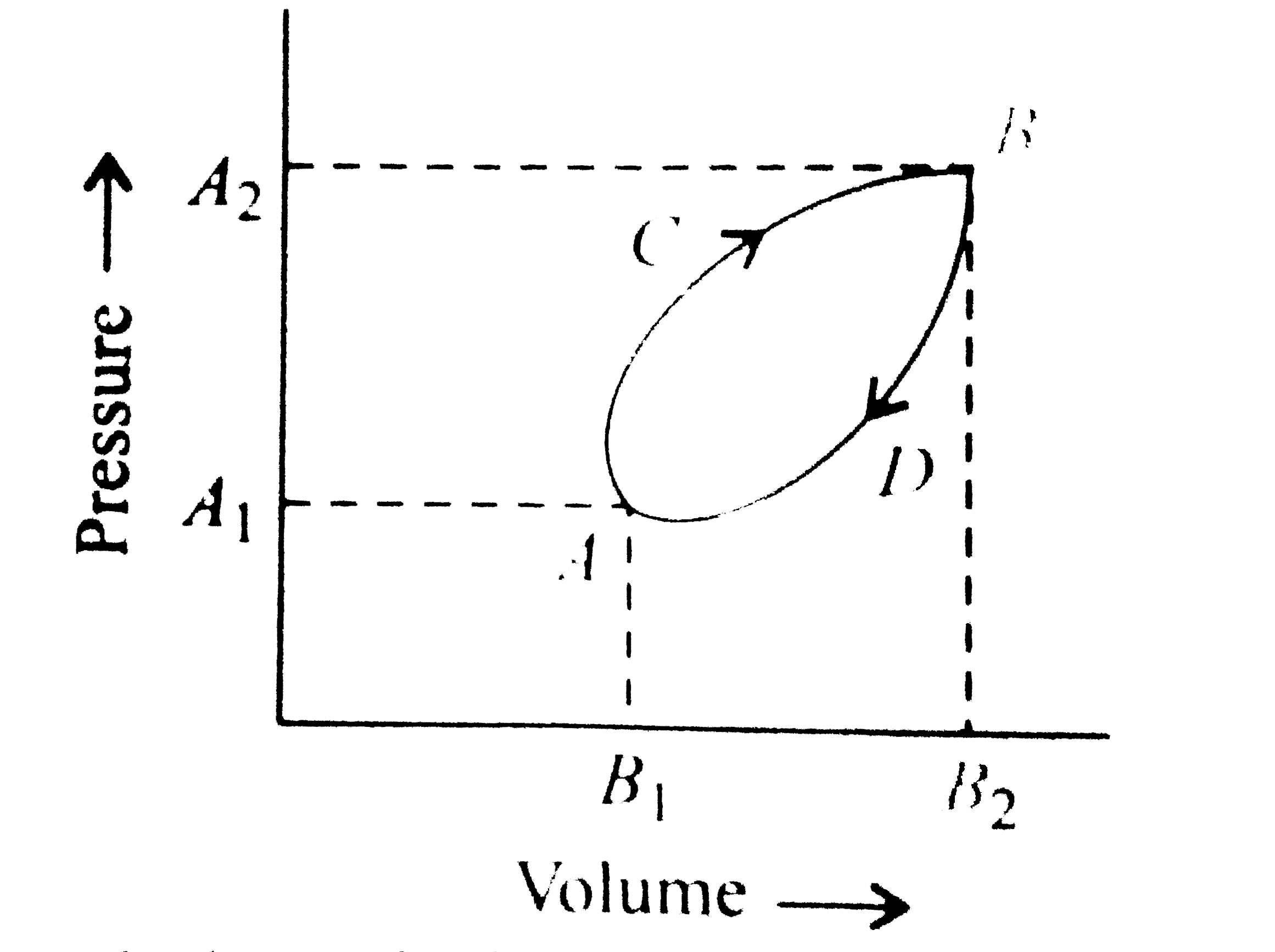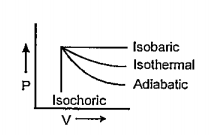Work done by the system in isothermal reversible process is wrev.=−2.303nRTlogV2V1. Also in case of adiabatic reversible process work done by the system is given by: wrev.=nRγ−1[T2−T1]. During expansion disorder increases and the increase in disorder is expressed in terms of change in entropy ΔS=qrev.T. The entropy changes also occurs during transformation of one state to other end expressed as ΔS=ΔHT. Both entropy and enthalpy changes obtained for a process were taken as a measure of spontaniety of process but finally it was recommended that decrease in free energy is responsible for spontaniety and ΔG=ΔH−TΔS.
Ag2O(s)→2Ag(s)+12O2(g) attains equilibrium at temperature…K is : (The ΔH and ΔS for the reaction are 30.5kJmol−1 and 66Jmol−1K−1 )
462.12
237
373
273
The correct Answer is:a
ΔG=ΔH−TΔS
0=30.5−T×66×10−3∴T=462.12K
Topper's Solved these Questions
Similar Questions
The heat of reaction for, C10H8(s)+12O2(g)→10CO2(g)+4H2O(l) at constant volume is −1228.2kcal at 25∘C. Calculate the heat of reaction at constant pressure at 25∘C.
View SolutionThe pressure-volume of varies thermodynamic process is shown in graphs:

Work is the mole of transference of energy. It has been observed that reversible work done by the system is the maximum obtainable work.
wrev>wirr
The works of isothermal and adiabatic processes are different from each other.
wisothermal reversible=2.303nRTlog10(V2V1)
=2.303nRTlog10(P2P1)
wadiabatic reversible=CV(T1−T2)
If w1,w2,w3 and w4 are work done in isothermal, adiabatic, isobaric, and isochoric reversible processes, respectively then the correct sequence (for expansion) would be
View SolutionThe pressure-volume of varies thermodynamic process is shown in graphs:

Work is the mole of transference of energy. It has been observed that reversible work done by the system is the maximum obtainable work.
wrev>wirr
The works of isothermal and adiabatic processes are different from each other.
wisothermal reversible=2.303nRTlog10(V2V1)
=2.303nRTlog10(P2P1)
wadiabatic reversible=CV(T1−T2)
A thermodynamic system goes in a cyclic process as represented in the following P−V diagram:

The network done during the complete cycle is given by the area
View SolutionThe pressure-volume of varies thermodynamic process is shown in graphs: Work is the mole of transference of energy. It has been observed that reversible work done by the system is the maximum obtainable work. w_(rev) gt w_(irr) The works of isothermal and adiabatic processes are different from each other. w_("isothermal reversible") = 2.303 nRT log_(10) ((V_(2))/(V_(1))) = 2.303 nRT log_(10)((P_(2))/(P_(1))) w_("adiabatic reversible") = C_(V) (T_(1)-T_(2)) P-V plots for two gases during adiabatic processes are given in the given figure: Plot D and Plot C should correspond to
View SolutionThe pressure-volume of varies thermodynamic process is shown in graphs: Work is the mole of transference of energy. It has been observed that reversible work done by the system is the maximum obtainable work. w_(rev) gt w_(irr) The works of isothermal and adiabatic processes are different from each other. w_("isothermal reversible") = 2.303 nRT log_(10) ((V_(2))/(V_(1))) = 2.303 nRT log_(10)((P_(2))/(P_(1))) w_("adiabatic reversible") = C_(V) (T_(1)-T_(2)) Calculate work done when 1 mole of an ideal gas is expanded reversibly form 30L to 60L at a constant temperature of 300k
View SolutionWork done by the system in isothermal reversible process is wrev.=−2.303nRTlogV2V1. Also in case of adiabatic reversible process work done by the system is given by: wrev.=nRγ−1[T2−T1]. During expansion disorder increases and the increase in disorder is expressed in terms of change in entropy ΔS=qrev.T. The entropy changes also occurs during transformation of one state to other end expressed as ΔS=ΔHT. Both entropy and enthalpy changes obtained for a process were taken as a measure of spontaniety of process but finally it was recommended that decrease in free energy is responsible for spontaniety and ΔG=ΔH−TΔS.
Which statements are correct? (1) The expansion work for a gas into a vacuum is equal to zero. (2) 1 mole of a gas occupying 3 litre volume on expanding to 15 litre at constant pressure of 1atm does expansion work 1.215kJ. (3) The maximum work done during expansion of 16gO2 at 300K from 5dm3 to 25dm3 is 2.01kJ. (4) The ΔS for S→L is almost negligible in comparision to ΔS for L→G. (5) ΔS=2.303nRlogV2V1. (at constant T)
View SolutionWork done by the system in isothermal reversible process is wrev.=−2.303nRTlogV2V1. Also in case of adiabatic reversible process work done by the system is given by: wrev.=nRγ−1[T2−T1]. During expansion disorder increases and the increase in disorder is expressed in terms of change in entropy ΔS=qrev.T. The entropy changes also occurs during transformation of one state to other end expressed as ΔS=ΔHT. Both entropy and enthalpy changes obtained for a process were taken as a measure of spontaniety of process but finally it was recommended that decrease in free energy is responsible for spontaniety and ΔG=ΔH−TΔS.
The heat of vaporisation and heat of fusion of H2O are 540cal/g and 80cal/g. This ratio of ΔSvap.ΔSfusion for water is:
View SolutionWork done by the system in isothermal reversible process is w_(rev.)= -2.303 nRT "log"(V_(2))/(V_(1)) . Also in case of adiabatic reversible process work done by the system is given by: w_(rev.) = (nR)/(gamma -1) [T_2 - T_1] . During expansion disorder increases and the increase in disorder is expressed in terms of change in entropy DeltaS = q_(rev.)/T . The entropy changes also occurs during transformation of one state to other end expressed as DeltaS = DeltaH/T . Both entropy and enthalpy changes obtained for a process were taken as a measure of spontaniety of process but finally it was recommended that decrease in free energy is responsible for spontaniety and DeltaG=DeltaH - T DeltaS . A chemical change will definitely be spontaneous if:
View SolutionWork is the mode of transference of energy. If the system involves gaseous substance and there is difference of pressure between system and surroundings, such a work is referred to as pressure - volume work (WPV=−PextΔV). It has been observed that reversible work done by the system is the maximum obtainable work. wrev>wirr
The works of isothermal and adiabatic processes are different from each other. for isothermal reversible proces,
Wisothermal reversible=2.303nRTlog10(V2V1)
Wadiabatic reversible=CV(T1−T2)
Calculate work done when 1 mole of an ideal gas is expanded reversibly from 20 L to 40 L at a constant temperature of 300 K.
View SolutionWork is the mose of transfrence of energy. If the system involves gaseous substance and there is difference of pressure between system and surroundings, such a work is referred to as pressure - volume work (W_(PV)= -P_(ext)DeltaV) . It has been observed that reversible work done by the system is the maximum obtainable work. w_(rev) gt w_(ir r) The works of isothermal and adiabatic processes are different from each other. for isothermal reversible proces, W_("isothermal reversible")=2.303 nRT log_(10) (V_(2)/V_(1)) W_("adiabatic reversible")=C_(V) (T_(1)-T_(2)) A thermodynamic system goes in acyclic process as represented in the following P-V diagram: 1. For an ideal gas, consider only P-V work in going from an initial state The net work done during the complete cycle is given by the area:
View SolutionFor the isothermal reversible expansion of an ideal gas from volume V1 to volume V2, the work done is given by wrev=…................. whereas for the irreversible expansion , it is given by wirrev=…..........
View SolutionDerive the equation for 'Wrev' in isothermal reversible process.
View SolutionExplain change in entropy of a system during a reversible process Delta S = (q_(rev))/(T)
View SolutionIf the system involves gaseous substance, then pressure volume work Wpv=−PextΔV. It has been observed that,
Wrev>Wir.
Also the work of isothermal & adiabatic processes are different from each other :
Wisothermalreversib≤=2.303nRTlog(v2v1)
Wadiabaticreversib≤=−Cv(T2−T1)
If W1,W2,W3,W4 are work done in isothermal, adiabatic, isobaric & isochoric reversible processes, then correct sequence would be
View SolutionIf the system involves gaseous substance, then pressure volume work W_(pv) = -P_(ext)DeltaV . It has been observed that, W_(rev) gt W_(ir) . Also the work of isothermal & adiabatic processes are different from each other : W_(isothermal reversible) = 2.303 nRT log(v_2/v_1) W_(adiabatic reversible) = -C_v(T_2-T_1) P-V plot for two gases during adiabatic processes are given as follows : Curves A & B should correspond to respectively
View Solution
